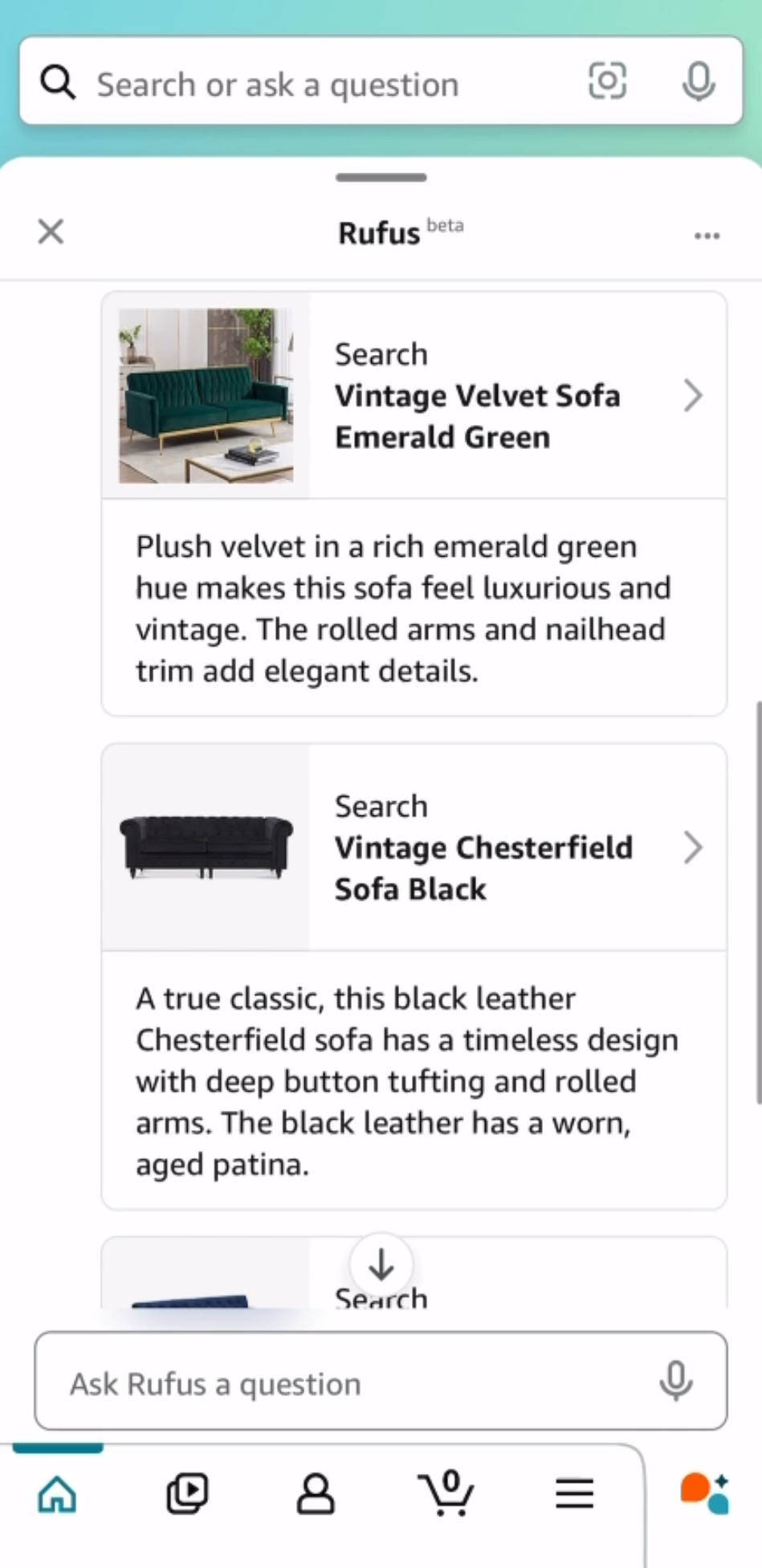More and more companies are using artificial intelligence (AI) tools to optimize their processes and systems. This includes one of the largest online retailers, Amazon. The introduction of Rufus, their latest AI-powered shopping assistant, is revolutionizing the way we search and shop on the platform. The innovation promises to fundamentally change the shopping experience on Amazon and meet customer needs even better.
What is Rufus and how does it work?
Rufus is an AI-powered shopping assistant designed to transform the search experience on Amazon. Instead of presenting an endless list of search results, as is the case with traditional search engines, Rufus delivers targeted and personalized results. The assistant is constantly learning and adapting its results to the user’s preferences.
Advantages of the new shopping assistant
Save time with specific search results: In today’s fast-paced world, people’s time is becoming increasingly important. This time should be used wisely. Rufus is working on precisely this aspect. Customers receive fewer, but more relevant results that better meet their individual needs. In contrast to traditional search engines, the AI assistant filters out specific products that might appeal to you and you don’t have to scroll endlessly through countless product ads.
Integrated and non-disruptive ads: Another key benefit of Rufus is the integration of ads into the conversation. Instead of displaying disruptive banners or pop-ups, ads are seamlessly integrated into the Rufus conversation and customized to the user’s interests. This not only makes it easier to discover new products, but also supports the customer’s purchasing decision.
Increased customer satisfaction and sales figures: The immense time savings and appropriate, non-disruptive ads greatly improve customer satisfaction. This also increases customer retention, recommendation and loyalty to Amazon. This leads to repeat purchases and higher sales for the company.
Tips for sellers when using Rufus
The importance of contextual product descriptions
When using the AI Assistant, sellers should be careful not to simply stuff the product description with keywords. Search behavior will change from keywords to context, which means that people are much more likely to ask questions about individual usage than to use keywords. You should therefore try to answer precisely these questions in the product description. One example of this is to write “good for hiking, good for rainy days, good for long-distance trips” etc. instead of “waterproof jacket”. People are increasingly asking AI questions along these lines.
Maximum use of product data for better AI interpretation
In addition, sellers on Amazon should provide as much product data as possible, as the AI can interpret all kinds of data. For example, CAD and 3D models are a good option to provide all kinds of dimensions. The reason is that people could ask Rufus for a sofa that fits in a 10×10 meter room.
Advantages of high-quality and diverse product images
The future of customer interaction
There are various factors that influence the future of customer interaction and consumer behavior. Here is a list of some of them:
- Adoption rate:Depending on how well the new shopping assistant from Amazon: Rufus is advertised and how easy it is to use, the adoption rate will adjust. This is about how quickly and how often customers will use Rufus.
- User experience: The expansion and use of the Shopping Assistant depends to a large extent on the user experience. By offering a specific search compared to traditional search methods, customers will have a positive experience and switch to this option.
- Marketing:The promotion of the new tool also plays an important role in the future of customer interaction. If the benefits are precisely defined, explained and brought to the user through certain marketing measures, this will have a positive influence on the use of the AI assistant.
- Integration and accessibility: How well Rufus is integrated into the respective desktop or mobile versions is also important for efficient customer interaction. The easier the access, the more likely the tool is to be used.
- Trust and reliability: By building trust by providing customers with certainty for individual recommendations, the shopping assistant is more likely to be used. Customers should be able to rely on receiving targeted help.
What options do customers have when using Rufus?
- Ask general questions about shopping:The new shopping assistant from Amazon: Rufus has different functions. Customers can ask the AI assistant questions about various products, such as what they should look out for when buying headphones or sneakers, what decorations they might need for a birthday party and much more.
- Compare products: You can ask Rufus what the differences are between certain similar products, such as vacuum cleaners or laptops. You then simply compare the answer with your needs and decide on an item.
- Shopping by occasion: The shopping assistant has the ability to recommend a whole range of products, for example if you ask it what you need for a long hike or a beach vacation.
- Ask specific questions about products: The AI assistant can also easily answer specific questions, such as whether a watch is waterproof, whether a toy is suitable for 2-year-olds or whether adhesive tape sticks to certain surfaces.
Summary
Amazon is using the possibilities of artificial intelligence with Rufus, a new AI-supported shopping assistant. They are revolutionizing the shopping experience on their website. Rufus provides targeted and personalized search results, saves time, integrates seamless and relevant ads and increases customer satisfaction and sales. Customers can ask general shopping questions, compare products, shop by occasion and ask specific questions about products.
The future of customer interaction is influenced by factors such as adoption rate, user experience, marketing, integration and trust. Overall, Rufus as a tool sets a new benchmark in online commerce and its functions.








